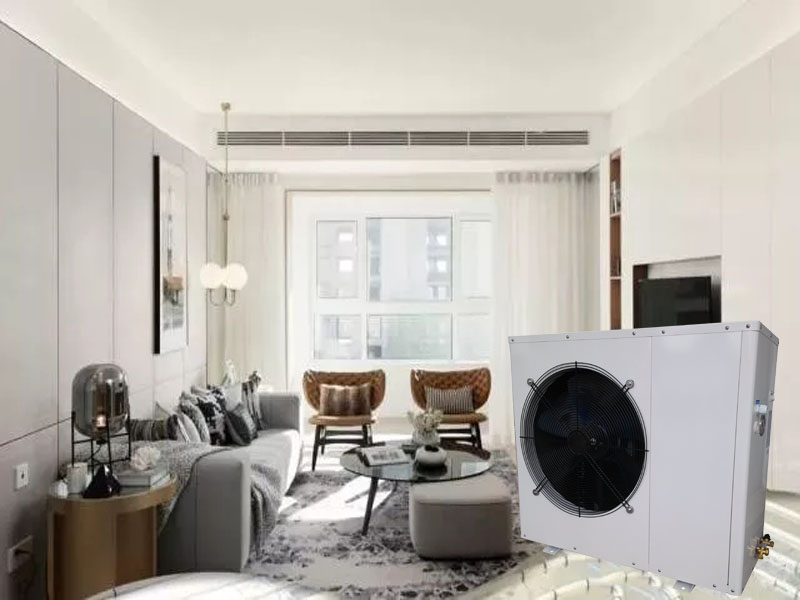
Principle: air source heat pump refrigeration
Air source heat pump refrigeration is to compress the recovered low-pressure refrigerant into high-temperature and high-pressure gas through the heat pump unit, and then the cooled refrigerant will become liquid under the continuous effect of pressure, and enter the evaporator after passing through the expansion valve. As the pressure of the evaporator suddenly decreases, the liquid refrigerant will quickly evaporate into gas here, and absorb a lot of heat. Under the action of fan, a large amount of air flows through the outer surface of evaporator, and the energy in the air is absorbed by the evaporator. The air temperature drops rapidly, and the air is discharged into fan coil to provide refrigeration service. Then the refrigerant absorbed by the evaporator flows back to the compressor to realize the refrigeration cycle.
Air source heat pump heating
The principle of air source heat pump heating is to absorb a large amount of low-temperature heat energy in the air, which is transformed into high-temperature heat energy through the compression of the compressor. In the heating process, the heat is transferred to the water, even in the low-temperature environment, the heat is transmitted indoors through hot water or hot air circulation. The whole system only consumes a little electric energy to drive the compressor to run and absorb the free heat in the air. In theory, under the average temperature of - 5 ℃, every kilowatt hour consumed can generate more than three kilowatt hours of heat. The energy-saving benefit is far higher than the traditional electric auxiliary heat and other forms. When the air source heat pump is heating, the temperature of the whole indoor space is evenly distributed, and there is no sense of hot air, which is conducive to maintaining the moisture in the environment and improving human comfort.
Air source heat pump is a scientific product with wide adaptability. Theoretically, it can be used in the environment above - 35 ℃. At an average temperature of - 5 ℃, each kilowatt hour of electricity consumed can generate more than 3 kilowatt hours of heat, saving 75% of energy, while at - 15 ℃, one kilowatt hour of electricity consumed can also generate more than 2 kilowatt hours of heat.
The same is the use of electricity. Compared with the electric heating, the direct electric heating is the conversion of energy, that is, the input of a piece of electric energy into a piece of heat energy, in fact, it can not be 100% converted, there will be loss; while the air source heat pump is mainly engaged in the transfer of energy, one piece of electric energy drive system transfers more than three pieces of heat energy from the air, and the energy-saving benefit compared with the electric radiation is up to To 70%. In winter, the comprehensive energy utilization rate is more than or equal to 3.0, which is much higher than that of direct electric heating.
The energy-saving effect of air source heat pump in the later stage will be favored and sought after by more and more families.

